The History That Was Stolen From You
We celebrate Independence Day. Independence from what? Through our successful revolution, we achieved independence from the British Empire. But more fundamentally we achieved independence from the Empire System of a hopelessly corrupt Europe going back to the days of Rome. Our revolution dealt a blow to the Anglo-Dutch Empire that was intent not only on enslaving us but on colonizing and enslaving the whole planet. Our nation was founded with the intention of freeing all the nations of the world from the Empire System, not through military intervention, but by serving as a model, as John Winthrop proclaimed in 1630: “We shall be as a city upon a hill.”
The assassination of John F. Kennedy in 1963 and the aggressive introduction of the Rock-Drug-Sex counterculture, in combination with plunging into a series of no-win British-style colonial wars starting with Vietnam, have left our nation bereft of its mooring. There were times in our history that we were the opposite of the British Empire. This report is intended to remind ourselves of those better times, the American System principles employed during those periods, and how we can return to them now, even in this seemingly hopeless situation.
1. Two Systems are Before the World
How is it that Americans don’t know the economic system that was created by Washington, Hamilton, Adams, and Lincoln, and which built the nation? We have been robbed of our historical knowledge and told that British free trade is our birthright. This lie must be refuted.
An advisor to President Lincoln, the economist Henry C. Carey, wrote his 1851 book Harmony of Interests to make clear the difference between the British and American systems. As you read his words carefully, consider how far we have moved away from the American System, adopting the British System instead. Carey was concerned not only with the development of America but with the whole world. The American mission was to make that happen. He wrote:
"Two systems are before the world; the one looks to increasing the proportion of persons and of capital engaged in trade and transportation … with necessarily diminished return to the labour of all; while the other looks to increasing the proportion engaged in the work of production … giving the labourer good wages, and to the owner of capital good profits. One looks to increasing the quantity of raw materials to be exported … thus impoverishing both farmer and planter by throwing on them the burden of freight; while the other looks to increasing the import of men, and diminishing the export of raw materials, thereby enriching both planter and farmer by relieving them from the payment of freight. One looks to compelling the farmers and planters of the Union to continue their contributions for the support of the fleets and armies, the paupers, the nobles and the sovereigns of Europe; the other to enabling ourselves to apply the same means to the moral and intellectual improvement of the sovereigns of America. One looks to the continuance of that bastard freedom of trade which denies the principle of protection, yet doles it out as revenue duties; the other to extending the area of legitimate free trade by the establishment of perfect protection… One looks to underworking the Hindoo, and sinking the rest of the world to his level; the other to raising the standard of man throughout the world to our level. One looks to pauperism, ignorance, depopulation, and barbarism; the other to increasing wealth, comfort, intelligence, combination of action, and civilization. One looks towards universal war; the other towards universal peace. One is the English system; the other we may be proud to call the American system, for it is the only one ever devised the tendency of which was that of elevating while equalizing the condition of man throughout the world.
Such is the true mission of the people of these United States.... To raise the value of labor throughout the world, we need only to raise the value of our own.... To substitute true Christianity for the detestable system known as the Malthusian, it is needed that we prove to the world that it is population that makes the food come from the rich soils, and food tends to increase more rapidly than population, thus vindicating the policy of God to man."
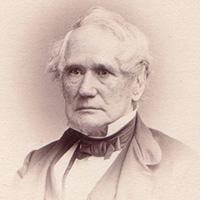
2. Massachusetts Bay Colony
John Winthrop (1588–1649) saw the necessity to escape the “perversity and corruption” of oligarchical Europe and fulfill the vision of Nicholas of Cusa and other republicans of the Renaissance who wished to establish a republic in the New World as a beachhead for mankind. In 1629, Winthrop wrote Reasons to Be Considered for Justifying the Plantation in New England, where he lays out the moral necessity of creating a republic in the New World.
"This land [of England] grows weary of her inhabitants, so as man who is the most precious of all creatures is here more vile and base than the earth we tread upon, and of less price among us, than a horse or a sheep… we use the authority of the law to hinder the increase of people… and thus it is come to pass that children, servants, and neighbors (especially if they be poor) are counted the greatest burden which if things were right would be the chiefest earthly blessing.
The whole earth is the Lord’s Garden and he hath given it to the sons of men, with a general condition, Gen: 1.28. Increase and multiply, replenish the earth and subdue it…"

Under the command of Governor John Winthrop, eight hundred passengers on four ships arrived in Salem Massachusetts, where he gave his sermon A Model of Christian Charity stating: “For we must consider that we shall be as a city upon a hill. The eyes of all people are upon us.”
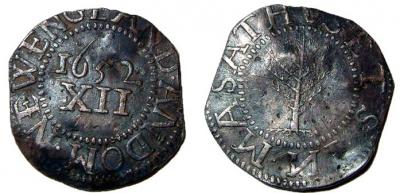
By 1647 John Winthrop, Jr. had established the Saugus Iron Works, the first automated, integrated industrial complex in the new world. The colony further established its sovereignty in 1652, when the General Court of Massachusetts Bay authorized the creation of a mint. Until then only kings could mint money! This new currency was called the Pine Tree Shilling, redeemable only in the colony and designed to stop the foreign draining of the colony’s hard currency. The currency’s value was not the silver itself, but the sovereign intention of the Government to deploy currency as credit to finance the physical economic development of infrastructure, agriculture, ship building and other industries.
Britain’s reigning monarchy, the Stuarts, intent on crushing the potential of this developing colony, preferred to impose an economy based on raw materials exports and slavery, in complete opposition to the sovereignly productive economy that Winthrop was organizing. Under Charles II, with his brother the Duke of York, later James II, The Royal Africa Company was founded. It went on to carry more African slaves to the Americas than any other company in the history of the Atlantic slave trade.
Shortly after the Massachusetts Bay Colony Charter (granted by the British monarchy in 1629) was revoked in 1684, Massachusetts Bay Colony leader Cotton Mather (1663–1728) issued a paper in 1691 entitled Some Considerations on Bills of Credit, where he challenged the people of New England to accept paper money, over silver or gold, based solely on the sovereignty of the nation! This was especially bold since there was no nation yet.
In 1710, Cotton Mather made clear his vision of a nation’s mission in his Essays to Do Good. He differentiated our mission from the looting policy of the British Empire.
It is an invaluable honor to do good; It is an incomparable pleasure. A man must look upon himself as dignified and gratified by God, when an opportunity to do good is put into his hands. He must embrace it with rapture, as enabling him to answer the great End of his being. Government… should vigorously pursue those noble and blessed ends for which it is ordained: the good of Mankind.
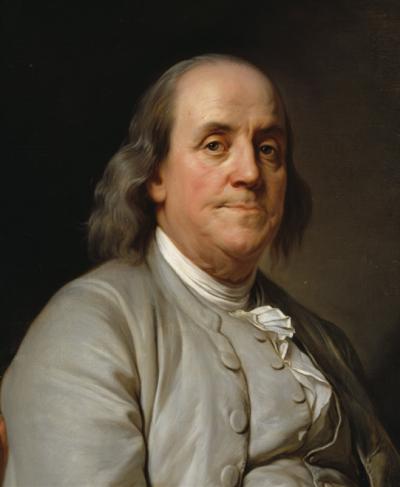
Benjamin Franklin (1706–1791) was born four years before this great work was written. He read it when he was 11 years old, and it had a formative effect. Franklin spent the rest of his life doing good! He created the first public fire department and the first public hospital in Philadelphia. Virginia Governor Alexander Spotswood (1676–1740) made Franklin the postmaster for Philadelphia in 1737. Throughout his life Franklin was committed to creating a nationwide postal service. He founded the American Philosophical Society (APS) in 1744 with a call to spread scientific knowledge to improve the conditions of mankind. Franklin was committed to the General Welfare long before the Constitution had concretized the idea!
Shortly after the founding of the APS, a young George Washington (1732–1798) was surveying the mountains of Virginia, carrying out Alexander Spotswood’s dream of expanding the colonies to the west beyond the Appalachians. Going west was of crucial importance to republicans then, and later, intent on creating a continent-wide bulwark against the Empire.
The British Empire, of course, intended to crush this development in its colonies. The Iron Act of 1750 forbade the colonies to produce iron from the raw ore, demanding instead they import it from England! The Currency Act of 1751 forbade the colonies from issuing paper “Bills of Credit” or forming public banks. On top of that, under the 1763 Treaty of Paris, which ended the French and Indian war, the British, under King George III, created a large Indian reserve to the west of the colonies, completely closing them in against the Atlantic and forbidding any development to the west.
3. The American Revolution
Benjamin Franklin set sail for England in 1757 as Pennsylvania’s official colonial representative. This was an attempt to avoid conflict with the Empire, by instead transforming it into a civilized republic. He worked with scientists and industrialists, particularly those centered in Birmingham and Manchester, not London, and certainly not The City of London, which was the center of the financial oligarchy. Scientists Joseph Priestly and John Gilbert, inventors Matthew Boulton and James Watt, and ironmaker John Wilkinson were among his collaborators. They built steam engines, industrialized Manchester, and began a network of canals that would bring civilization to England.
Franklin did not succeed in civilizing Britain’s reigning House of Hanover, however, and “after a long train of abuses,” he, among other patriots, decided there was no other recourse than revolution.

During the American Revolution (which we will not discuss in detail in these pages), General George Washington was in a constant battle with squabbling states over securing the soldiers and materials necessary for a decisive victory. The 1776 Declaration of Independence was followed only by the weak Articles of Confederation with which to govern. This was infuriating to Washington, and he had this problem firmly in his mind as he would later preside over the Constitutional Convention.
In 1781 the Continental Congress created the position of Superintendent of Finance. Robert Morris (1734–1806) was appointed to that office, where he worked together with his Assistant Superintendent Gouverneur Morris (1752–1816) to provide desperately needed supplies to the army. These funds came from personal monies, loans, and gifts from patriots and from the States, often with much arm twisting. Morris came to understand that only with the power to levy taxes and lay tariffs could a government have the sovereign power to develop the nation.
The first attempt at a national bank was the Bank of North America. Organized in 1781 by Robert Morris and Alexander Hamilton (1757–1804) and capitalized with foreign loans of silver and gold organized by Benjamin Franklin and John Adams (1735–1826), as well as through patriots buying stock, it created a new currency more secure than the depreciating “Continentals.” But the lack of union between the thirteen states prevented them developing a national plan for funding the war debt.
At Yorktown, the British lost the war, but they never gave up trying to destroy us. Washington had understood for years the importance of producing everything we could in the United States. Not just agriculture, as Thomas Jefferson (1743–1826) would insist, but manufacturing as well. In fact, now, with the close of the shooting war, the British immediately moved to the next means of attack: flood and drown the fledgling America with cheap manufactured goods. Jefferson fell right into the British trap and argued that “while we have land to labor then, let us never wish to see our citizens occupied at a work-bench… for the general operations of manufacture, let our work-shops remain in Europe.”
In the mid 1780s, George Washington, concerned that the Confederation could splinter, spent much of his time preoccupied with building canals, roads and other infrastructure that could pull together and develop the nation. Even before signing the 1783 Treaty of Paris that officially ended the war with England, Washington left his headquarters in Newburgh, New York in the summer of 1783 to tour the Mohawk River Valley, surveying the potential for an East-West canal. The fact that it would be in New York and not in his native Virginia did not concern him in the least! The nation was his focus.
In 1785 Washington took up the delicate task of bringing Virginia and Maryland together in building the Potomac canal. States often bickered over who would benefit more over such projects. A national mission was still lacking, and that vulnerability could be exploited by the British if not remedied. A convention was held in Annapolis in September 1786, entitled “Meeting of Commissioners to Remedy Defects of the Federal Government.” Only five states participated, but Hamilton, Robert Morris, and James Madison (1751–1836), who at that time was a staunch nationalist, laid out the plans for a Constitutional Convention to be held in Philadelphia in May 1787.
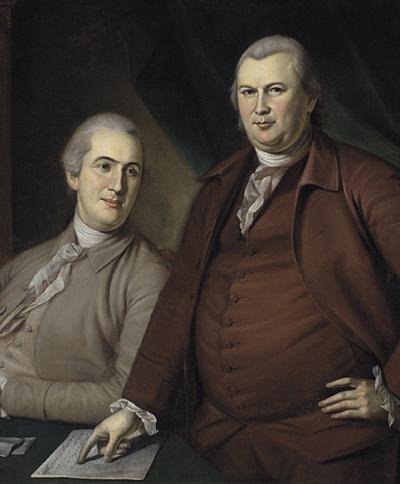
4. Constitutional Convention
What George Washington, Benjamin Franklin, Alexander Hamilton, Robert Morris, and Gouverneur Morris, among other staunch nationalists planned to do at this Convention was not to modify the nonfunctional Articles of Confederation, but to start completely fresh and create a new powerful Constitution, with sufficient powers agreed to by the people themselves, rather than those imposed by a confederation of sovereign states.
In preparation for the Convention, a nationalist group called the Society for Political Inquiries first met at the City Tavern in Philadelphia on Feb. 9, 1787. Members included Robert Morris, Gouverneur Morris, scientist David Rittenhouse (1732–1796), Charles Biddle (father of future National Bank head Nicholas Biddle), and Jonathan Williams, Jr. (Franklin’s great nephew, and future founding Superintendent of West Point Military Academy). Three days before the opening of the Convention, a paper was written by Tench Coxe (1755–1824), entitled An Enquiry into the Principles on which a Commercial System for the United States Should be Founded. It was printed and distributed to every member of the Constitutional Convention. It instructed the delegates on a program for the development of the nation contrary to the British Free Trade system, demanding instead the “prohibitive powers… enabling Congress to prevent the importation of such foreign commodities, as are made from our own raw materials.”
The purpose of government, laid out in the Preamble of the Constitution, composed by Gouverneur Morris, was a
clear commitment to the people of the nation as a whole, rather than the separate states:
We the People of the United States, in Order to form a more perfect Union, establish Justice, insure domestic Tranquility, provide for the common defense, promote the general Welfare, and secure the Blessings of Liberty to ourselves and our Posterity, do ordain and establish this Constitution for the United States of America.
The other critical clause in this new Constitution was found in Article 1, Section 8, which states:
To make all Laws which shall be necessary and proper for carrying into Execution the foregoing Powers, and all other Powers vested by this Constitution in the Government of the United States, or in any Department or Officer thereof.
As Alexander Hamilton (along with John Jay and James Madison, penning the Federalist Papers) led the fight to organize the states to ratify the new Constitution, we find an immediate battle between the nationalists and those who would insist on the power of the states as primary. An argument from the States Rights faction was to be heard again and again. As Patrick Henry (1736–1799) argued at the Virginia ratifying convention:
Among ten thousand implied powers which [Congress] may assume, they may, if we be engaged in war, liberate every one of your slaves if they please. And this must and will be done by men, a majority of whom have not a common interest with you… Have they not the power to provide for the general defense and welfare? May they not think that these call for the abolition of slavery? May they not pronounce all slaves free, and will they not be warranted by that power?
The nationalists prevailed and our Constitution was ratified on June 21, 1788. With sixty-nine electoral votes, George Washington was unanimously elected the first President of the United States. He appointed Alexander Hamilton as Secretary of the Treasury.
Hamilton immediately went to work. The nation building policies that Hamilton pursued would later be named by Henry Clay (1777–1852), “The American System.” It is a tragedy that American System policies were
hegemonic in only short periods of our history, but the effect of those periods were amazing spurts of physical economic development. Under the policy of a credit system, the financial system was placed at the service of the physical economy.
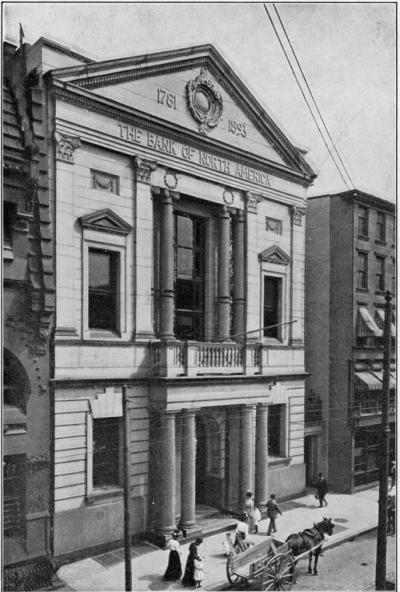
5. Hamilton’s American System
The Revolutionary War had left the new nation heavily indebted, with Continentals and local currencies nearly worthless. The problem Hamilton faced was that, on the one hand, the debt could not be paid because the only way to collect the necessary revenue would be to tax an impoverished people beyond their means, but on the other hand, if the debts were not serviced, the country would have no credit.
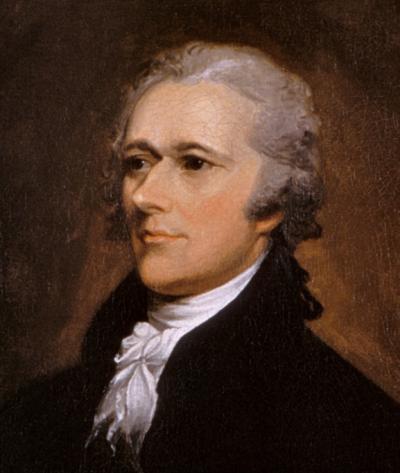
On January 9, 1790, Hamilton presented his Report on Public Credit. Essentially, Hamilton proposed that all the debts of the states be incorporated into the debt of the nation. Some states were more heavily indebted because they paid for a larger share of the Revolution, but all the states enjoyed the freedom that was won. Under the process of assumption, Hamilton nationalized the state debts, and by securing the means for making payments on it, turned that debt into stable credit for agriculture, manufacturing, and internal improvements in the nation. As the economy grew, the debts would be repaid through taxation including tariffs on imports, which would also promote internal production. Shockingly, Madison, Hamilton’s old nationalist partner, now turned against his plan, under the influence of Secretary of State Jefferson.

In December 1790 Hamilton proposed a Bank of the United States to regulate the currency and as Hamilton stated, “by contributing to enlarge the mass of industrious and commercial enterprise, banks become nurseries of national wealth.” Foreign investment in the Bank was allowed, but foreigners had no voting power. It was our sovereign bank.
The bank immediately came under attack from Jefferson’s circles. Such a bank was not specifically mentioned in the Constitution and therefore had no right to exist, they argued. Hamilton argued that the “necessary and proper” clause meant otherwise:
[T]his general principle is inherent in the very definition of government, and essential to every step of progress to be made by that of the United States, namely: That every power vested in a government is in its nature sovereign, and includes, by force of the term, a right to employ all the means requisite and fairly applicable to the attainment of the ends of such power, and which are not precluded by restrictions and exceptions specified in the Constitution, or not immoral, or not contrary to the essential ends of political society.
Washington agreed and signed the Bank into law on February 25, 1791.
Hamilton moved next to his Report on the Subject of Manufactures, delivered to Congress on December 5, 1791. He argued for a division of labor, and the increased use of machinery for labor and timesaving, protective duties on foreign articles, bounties to be paid for industrial innovations, a banking system for national development and safe, convenient transfer of monies, and aiding transport of commodities by government backing of canals and roads. (Internal Improvements!) Hamilton took on the Jeffersonians directly, stating:
It is not uncommon to meet with an opinion that though the promoting of manufactures may be the interest of a part of the Union, it is contrary to that of another part. The Northern & Southern regions are sometimes represented as having adverse interests in this respect. Those are called manufacturing, these agricultural states; and a species of opposition is imagined to subsist between the manufacturing and agricultural interests.
But most importantly, he recognized that to “cherish and stimulate the activity of the human mind, by multiplying the objects of enterprise, is not among the least considerable of the expedients, by which the wealth of a nation may be promoted.”
Alive with the spirit of Benjamin Franklin, and expressing a commitment to “cherishing and stimulating the activity of the human mind,” Pennsylvania became a center of nationalist activity. In 1789 a number of leading citizens of Philadelphia had formed a “Society for Promoting the Improvement of Roads and Inland Navigation.” Robert Morris accepted its presidency, and David Rittenhouse was among its members. In February 1791 the Society sent a report to the Pennsylvania Legislature elaborating a plan to link the rivers of the commonwealth from east to west, conquering the Appalachian Mountains in between. The aptly named Union Canal and Schuylkill Navigation works came directly out of this proposal.
In 1794 a young Dewitt Clinton (1769–1828), soon to be the father of the Erie Canal, gave a speech laying out his vision for the future of our nation and implicitly the effect we would have on the world:
Great improvements must also take place which far surpass the momentum of power that a single nation can produce, but will with facility proceed from their united strength. The hand of art will change the face of the universe. Mountains, deserts, and oceans will feel its mighty force. It will not then be debated whether hills shall be prostrated, but whether the Alps and the Andes shall be levelled; nor whether sterile fields shall be fertilized, but whether the deserts of Africa shall feel the power of cultivation; nor whether rivers shall be joined, but whether the Caspian shall see the Mediterranean, and the waves of the Pacific lave the Atlantic.
The future looked bright, but with Aaron Burr’s treasonous assassination of Hamilton in 1804, and President Madison’s dismantling of the National Bank in 1811, Washington and Hamilton’s American System was crippled. Once again the British began military assaults. Kentucky Congressman Henry Clay organized the “War Hawks” who launched what was known as the War of 1812 against Great Britain. The British burned down our Capitol, but after the Battle of Baltimore, “our flag was still there.” The negotiating skills of John Quincy Adams (1767–1848) in Ghent were critical to getting favorable terms in the peace treaty. Although we won the war, our lack of military, transportation and industrial readiness was made plain. One major effect of the war was to unite Americans, despite party differences, around the need to build the nation. Under tremendous pressure, one of Madison’s last acts in office was to restore the Bank of the United States: The Second National Bank. Unfortunately, his final act in office was to veto Henry Clay and John Calhoun’s (1782–1850) Bonus Bill, which would have invested surplus revenues from the Bank directly into internal improvements of the nation. Madison argued a strict constructionist (i.e., Southern Slavocracy) view of the Constitution to defend his veto.
6. Monroe and John Quincy Adams
President James Monroe was a less tragic figure. In his first inaugural address he stated his support for manufacturing and internal improvements:
Other interests of high importance will claim attention, among which the improvement of our country by roads and canals, proceeding always with a constitutional sanction, holds a distinguished place. By thus facilitating the intercourse between the States we shall add much to the convenience and comfort of our fellow-citizens … and … of [great] importance, we shall shorten distances, and, by making each part more accessible to and dependent on the other, we shall bind the Union more closely together.
Our manufacturers will likewise require the systematic and fostering care of the Government. Possessing as we do all the raw materials, the fruit of our own soil and industry, we ought not to depend in the degree we have done on supplies from other countries...the capital which nourishes our manufacturers should be domestic, as its influence in that case instead of exhausting, as it may do in foreign hands, would be felt advantageously on agriculture and every other branch of industry.
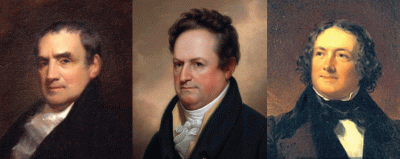
A team of patriots including Mathew Carey, Nicholas Biddle, DeWitt Clinton, and Joseph Gardiner Swift now joined together to revive Hamilton’s System and launch a massive physical economic surge.
Mathew Carey was a polemical writer who took on the foolish axioms of Adam Smith and British free trade “pregnant with certain ruin to any nation by which they may be carried into operation.” He showed that American citizens must think outside of the mental prison the imperial establishment had constructed for them, that “cheap” was not good if it was destroying our capacity to produce at home, and that agriculture was not superior to manufacturing, as a colonial master would like us to believe, but in fact, there was an “Identity of Interests” between the two. He reprinted large sections of Hamilton’s 1791 Report on Manufactures.
Nicholas Biddle was appointed head of the Second National Bank by President Monroe in 1823. Biddle used the bank to funnel cheap credit into manufacturing and infrastructure including railroads.
As governor of New York, Dewitt Clinton launched the “proof of principle” of canals in America. On July 4, 1817 the 363-mile Erie Canal was begun, completely financed by the State of New York. This canal served as a training ground for the American engineers mainly supplied by the Army Corps educated at West Point.
Joseph Gardiner Swift reorganized West Point into a science and engineering center. He hired Claudius Crozet, a military engineer who had studied at France’s Ecole Polytechnique, to be Professor of Civil and Military Engineering. Crozet taught “the construction of buildings, the design of arches, canals, and bridges, and the machines used to build them… by 1826, the engineering course included roads, tunneling, inland navigation, railroad construction, and artificial harbors.” Crozet, Stephen H. Long, David B. Douglass and others taught a generation of Army Corps cadets who would go on to build the nation.
The “private” West Point Foundry was organized in 1817 by these same circles just as the Erie Canal began. It produced the first steam engine built for practical use, all the castings for the Erie Canal, the water pipes for the Croton aqueduct and for the cities of New York, Boston and Chicago.
On March 6, 1819, the Supreme Court issued a unanimous decision that not only did states have no right to tax the National Bank, but further that it was absolutely constitutional for Congress to create one. In the opinion, Chief Justice John Marshall wrote, “Congress has the power to pass all laws ‘necessary and proper’ to carry out its delegated powers in Article I, Section 8 of the Constitution. The bank provided the means to carry out these powers. Therefore, the act of Congress chartering the bank ‘is a law made in pursuance of the Constitution, and is part of the supreme law of the land.’”
In his seventh Annual Message to congress, December 2, 1823, James Monroe, a Virginian, praised the Military Academy and proposed that congress appropriate funds for the Corp of Engineers to survey the routes to link canals from Lake Erie to the waters of the Ohio. He also recommended a new tariff to protect manufacturing.
On March 2, 1824 Chief Justice John Marshall wrote in the landmark case Gibbons vs. Ogden, that the Constitution gives the federal government supremacy over interstate commerce: “This power, like all others vested in Congress, is complete in itself, [and] may be exercised to its utmost extent...” He rejected “that narrow construction [interpretation of the Constitution—ed.] which would cripple the government and render it unequal to the object for which it is declared to be instituted.”
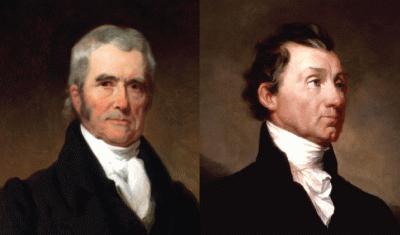
Empowered by this ruling, Congress then passed the Tariff Act of 1824, introduced by Henry Clay, who made the point that there was an unholy trade alliance between England and the slave based economy in the South. The General Survey Act was introduced to lay the foundation for a general system of federally sponsored transport and to employ officers of the Army’s Corps of Engineers to make surveys for roads and canals. Once again, the British-run Slavocracy responded with rage, denouncing the Act and, warning, through its leading representative, John Randolph of Roanoke, who spoke in Congress to attack the idea that the Constitution came from the “people” and had authority superior to that of the states: “If Congress possess the power to do what is proposed by this bill… they may emancipate every slave in the United States.” Foreshadowing the Confederacy, Randolph even argued that the states themselves could undo the Constitution if they chose. President Monroe rejected the backwardness of the Slavocracy, and on April 30, 1824 signed into law a bill creating a Board of Engineers for Internal Improvements, made up of leading West Pointers such as General Simon Bernard and Colonel Joseph G. Totten.
Mathew Carey and the Biddle circles organized the Pennsylvania Society for the Promotion of Internal Improvements on November 30, 1824, putting out pamphlets, and holding meetings to organize the people to support a large public works program in Pennsylvania. The results were spectacular. Hundreds of miles of canals and later railroads were built.
As James Monroe’s Secretary of State John Quincy Adams said “[America] goes not abroad in search of monsters to destroy.” As President, Adams would put the army to work building our nation.
Dewitt Clinton collaborated with Ethan Allen Brown, Governor of Ohio, to coordinate a unified canal system. On July 4, 1825 Clinton turned the first spadeful of dirt for the Ohio and Erie canal. July 21, 1825 Clinton broke ground for the Miami and Erie Canal. Toledo, Cincinnati, Cleveland and many other cities were born in the process. On November 4, 1825, the Erie Canal was completed, creating the great industrial centers of Buffalo and Rochester.
The canals were financed with bonds, but also through the U.S. Land Grant Act of 1828, allowing states to sell federal land to sponsor such internal improvements. Under Biddle, the Second National Bank invested directly into canals, railroads, roads and industries.
Under John Quincy Adams, a survey of the B&O railroad was overseen by two West Point men: Brevet Lieutenant Stephen H. Long and Captain William Gibbs McNeill. In 1828 the U.S. Army Topographical Engineers surveyed the entire route. The chief engineer was George Washington Whistler, another West Point graduate.
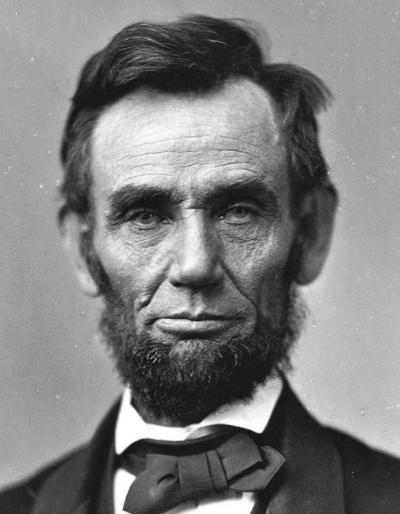
7. Abraham Lincoln and the Greenbacks
A new president was elected in 1828: Andrew Jackson. Despite what our founding fathers conceived of and despite what the Supreme Court under Marshall had ruled again and again, Andrew Jackson vetoed a bill to recharter the Second National Bank in 1832, ushering in what came to be known as the “wildcat” banking system. The U.S. no longer had a sovereign currency of its own, issued either by the U.S. Treasury or any responsible U.S. agency. Instead, currency was issued by 1,496 state banks, which were chartered and regulated, mostly, by the various states.
Despite this, the thrust of progress launched in the 1820s continued. By 1835, under the General Survey act, some 20 U.S. railroads were using active-duty Army personnel in their construction and management. Instead of going to war, we went to build around the world. George Washington Whistler, for example, died of cholera in Saint Petersburg, Russia, building the railroad to Moscow! In 1836, state representative and American System advocate Abraham Lincoln (1809–1865) guided the state of Illinois to enact a bill to construct the Illinois and Michigan Canal. This canal would link Lake Michigan with the village of Chicago that had been carved out of its mud banks by Stephen H. Long in 1816 to the Mississippi River. Major industrial cities like Chicago didn’t “just happen,” they were organized by patriots! However, with the destruction of our National Bank, the country sank into a deep depression in 1837. The repeal of the General Survey Act in 1838 under president Martin van Buren furthered the attack on the American System. Our nation came to be dominated by British and Wall Street speculation, rather than physical growth.
With Lincoln just coming into office as President, the long-standing British intention to destroy the American republic and balkanize the United States into smaller, warring states that could be reabsorbed into Mother Britain erupted in 1860 as the American Civil War, using the Confederacy as an instrument from within. Amazingly, during his Presidency, Lincoln not only defeated this British-instigated attack, but also created a forty-year-long scientific-technological shock wave that produced, by 1900, the greatest upward transformation of the physical economy and labor power ever recorded in history.
At the start of the Civil War, the United States government faced two problems. First, it did not have sufficient revenue for the expense of war, and second, it did not control a fully sovereign credit and banking system. With the Confederate congressmen gone from Washington, after the Feb. 8, 1861 establishment of the Confederacy, the lame-duck session of Congress passed the Morrill Tariff, restoring the 1846 tariff rates, and from 1861 to the middle of 1864, new bills, pushing rates upward, were introduced and passed. At the end of the war, the average rate on dutiable goods stood at about 47% compared with the 18.8% at the beginning of the war.
Next, the credit and banking crisis was tackled. The total stock of U.S. currency in circulation was a small $200 million. In 1861, U.S. Representative Elbridge Gerry Spaulding, a Lincoln Republican from Buffalo, New York, a commercial banker, a Hamiltonian, and Chairman of the House Ways and Means Committee, drafted the Legal Tender law, which created the Greenback currency. It was the first currency in American history that was issued directly by the U.S. Treasury—not a bank—and was not redeemable in gold. Spaulding’s Legal Tender Act passed the Congress on February 25, 1862, with the Treasury issuing currency in the amount of $150 million. Additional acts increased currency to a total of $450 million in Greenbacks (so called because the color of the bill was green). Starting with the $200 million in banknotes, the U.S. currency in circulation tripled to $650 million within 13 months! No longer was the currency base restricted. This was an elixir: it allowed munitions to be purchased, soldiers to be paid (with currency they could spend), and manufacturing and agriculture to grow freely. And the specter of inflation was no threat, since the Greenbacks were directed to physical economic improvement, which would increase the quantity and quality of economic output.
As a Hamiltonian, Spaulding was completely aware that, by his law, Greenbacks would be redeemable into U.S. government bonds, payable at some date in the future, and that those bonds, at least in the current form of his legislation, would be paid for with taxes—actually several times over—by the increased science, output and productivity that the Greenbacks would enable in the present and near future. Scientific and technological progress in the future would shape the present.
Abraham Lincoln then signed into law the first Homestead Act on May 20, 1862, providing applicants with 160 acres of federal land for a nominal filing fee. The applicant would have to maintain continuous residence on the land, and make physical improvements upon it, for a five-year period, before receiving the title to the land. The 1866 Homestead Act explicitly included Black Americans. In one stroke, Lincoln opened the whole nation to be developed by the growing population, and ended the feudal land-monopoly systems of Europe and the Confederacy.
On July 1, 1862, Lincoln signed the Land-Grant College Act, which granted 30,000 acres of federal land to each state for each Senator and member of the House of Representatives the state had. The state would sell the land, and the income from the investment of the proceeds would be used to build one or more colleges in the state, “where the leading object shall be… to teach such branches of learning as are related to agriculture and the mechanic arts.” This became the spawn for many state public university systems today.
The Act created a labor force of advancing education and skill level that could master industry and agriculture as its technological level increased. The Land-Grant College Act created and funded fifty-seven colleges and universities, at least one in every state, and the Morrill Act of 1890 created nineteen of the nation’s historically Black colleges.
Next, although a seemingly impractical idea, on the very same day, President Lincoln signed the Pacific Railway Acts into law on July 1, 1862, which authorized the Central Pacific Corporation to start in San Francisco, building rail eastward, and the Union Pacific Corporation to start in Council Bluffs, Iowa and build rail heading westward. (The two rail lines became one, joining at Promontory Summit, Utah on May 10, 1869.) Lincoln took Army Corps engineer Grenville Dodge out of the war and commissioned him to build the railroad financed by U.S. Government bonds and land grants, thus overturning Van Buren’s attack on the General Survey Act. The outcome was unprecedented, reducing the time needed for a trip from Council Bluffs to San Francisco, with young men, in good condition, with horses and supplies, from several months, to 4.25 days! This was critical in pulling the East and West of the nation together.
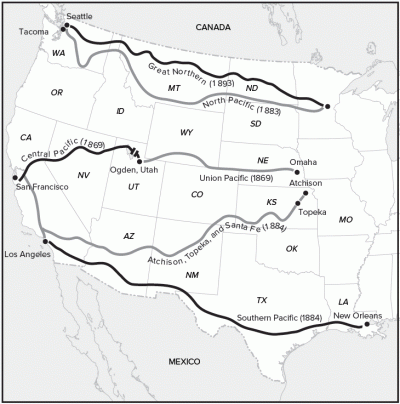
Between 1862 and 1864, Lincoln also signed the charters for construction of two additional transcontinental railroads: the Northern Pacific and the Southern Pacific, and two further transcontinental railroads were chartered and built before 1900, bringing the total to five.
The rail lines acted as spines for development corridors: new towns and cities arose, new farms and factories flourished. Once-barren land, unused for millennia, became fruitful with economic activity. Between 1865 and 1900, the miles of railroad in operation in the U.S. zoomed from 35,100 to 193,300, and caused steel production to rise from less than 250,000 tons, to 11.2 million tons.
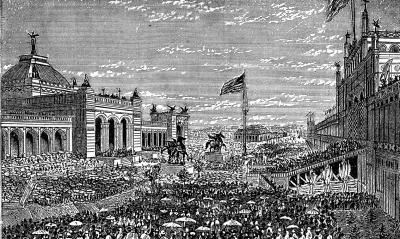
8. Centennial Exposition and the Global Spread of the American System
Faced with the defeat of their Confederate puppets, the British resorted to assassinating Lincoln, but American System policies had been unleashed once again. In 1876, the 100-year anniversary of the Declaration of Independence, the Centennial exhibition, led by Henry C. Carey, the son of Mathew Carey, opened. Nine million visitors, including scientists, engineers, industrialists and economists, saw a vast array of drill presses, saws, printing presses, water pumps and much more, located in more than 200 different buildings, and all powered by one single steam engine. Baldwin Locomotive Works constructed several exceptionally beautiful locomotives just for the Centennial; and the 29-year-old Thomas Alva Edison put on display his automatic printing and multiplex telegraph devices. Never before in history had such a powerful vision been exhibited.
The United States had developed into a mighty industrial powerhouse. The population continually grew, the standard of living increased, and the continent was united via a series of canals and rail lines, with the transcontinental rail connection being completed in 1869, tying the country together from east to west.
Under Henry Carey’s leadership, these patriots, far from promoting an isolationist nationalism, promoted a world community of sovereign nation-states against the system of empire. Much to the dismay of the British imperialists, the American system was spreading internationally, from Germany and France, to Russia, China and Japan.
In Germany, Chancellor Bismarck, having studied the writings of Henry Carey and a German proponent of the American System, Friedrich List, broke with the free trade system and adopted the American system of economics:
The success of the United States in material development is the most illustrious of modern times...Because it is my deliberate judgment that the prosperity of America is mainly due to its system of protective laws, I urge that Germany has now reached that point, where it is necessary to imitate the great tariff system of the United States.
In France, high tariffs were introduced, and the French rail network expanded. In secret agreement, French and German industrialists planned a rail connection from Berlin to Baghdad, with the help of the head of Deutsche Bank, Georg von Siemens, in order to create entirely new trade routes throughout the world, independent of the British-controlled sea trade.
In Russia, American railroad engineers worked with Russian transportation minister Count Sergei Witte, the economist and chemist Dmitri Mendeleyev, and others, to organize a system of higher tariffs and the construction of the Trans-Siberian rail project, modeled on Lincoln’s American transcontinental railroad.
The very first locomotive on this Trans-Siberian railroad was built in Philadelphia by the Baldwin Locomotive Works. The ultimate intention was to link the European railways with the Anglo-Indian railways, through central Asia, as well as by furthering the Baghdad railway, and linking with future Chinese railways. By 1890, the Russians were already planning a Bering Strait bridge to connect to America.
In Japan, during the Meiji Restoration of 1868, revolutionaries under Prince Tomomi Iwakura overthrew the feudal Tokugawa warlords; they set up a modern central government guided by Japanese students of Henry Carey and Friedrich List. In 1871, Carey’s student and political agent E. Peshine Smith (1814–1882) was appointed economic adviser to the Meiji Emperor. Other Carey associates were also then in Japan, working with the new government, identifying mineral resources, planning transport, and outlining protectionist tariff strategies to develop Japan as a modern industrial power and counterweight to British colonial policies. Japan became a leading American ally, and created the first independent national bank in that region of the world.
In China, Count Witte, together with French Foreign Minister Hanotaux, set up the Russo-Chinese Bank, largely with French capital, which was allowed to lease the necessary territory for building the last leg of the Trans-Siberian line through Manchuria, creating a new company, the Chinese Eastern Railroad, for that purpose. Where the British had unloaded crates of opium, American Civil War engineers unloaded crates of Baldwin locomotives. Carey ally Wharton Barker—an outspoken proponent of the dismemberment of the British Empire—worked with the circles around the Chinese emperor for the creation of a joint Chinese-American bank, and his “China modernization project” included a system of Chinese-run national railways and telegraphs.
This was the American System’s 19th Century “World Land-Bridge”—a “win-win” policy between sovereign nations. Instead of British cheap goods, drugs and slave labor, reciprocity treaties were negotiated to organize a “community of principle,” whereby nations could trade on the basis of bolstering the economies of each other. That is, working to strengthen each other, to modernize the world and eliminate poverty and conflict once and for all.
This was in keeping with the outlook of Henry C. Carey, who wrote in his 1851 Harmony of Interests: “Such is the true mission of the people of these United States. ‘Do unto others as ye would that others should do unto you.’”
But with this perspective on the horizon, the British Empire’s very existence was now under mortal threat. They orchestrated World War I, and true to their methods, turned nations that would be friends with each other into enemies of each other. Furthermore, their puppet, President Woodrow Wilson, handed the reins of our banking system back to the British through the creation of the Federal Reserve in 1913. This ended with the crash of the banking system in 1929, and a deepening economic depression.
9. Franklin Roosevelt’s Explosive Economic Revival of the United States
As FDR came into office in 1933, industrial production was down 54% from its 1929 levels; steel production operated at only 24% of its capacity; millions of farmers were bankrupt; the banking and financial system was shattered, with tens of millions of Americans having lost all of their savings, and many millions having lost their homes. Roosevelt realized he had to take decisive action and could only accomplish this through the inherent powers of the U.S. Constitution, especially those granted to the executive. Roosevelt took decisive action, and in his March 4, 1933 inaugural address stated:
I am prepared under my constitutional duty to recommend the measures a stricken nation in the midst of a stricken world may require. These measures, or such other measures as the Congress may build out of its experience and wisdom, I shall seek, within my constitutional authority, to bring to speedy adoption.
But in the event that the Congress shall fail to take one of these two courses, and in the event that the national emergency is still critical, I shall not evade the clear course of duty that will confront me. I shall ask the Congress for the one remaining instrument to meet the crisis—broad executive power to wage a war against the emergency, as great as the power that would be given to me if we were in fact invaded by a foreign foe.
In the same speech, he indicated how he would tackle his first task: “Our greatest primary task is to put people to work.”
To do this, Roosevelt needed tremendous quantities of inexpensive Hamiltonian-directed credit for productive purposes, which he obtained, first from wise deployment of the federal budget, but even more so from the Reconstruction Finance Corporation (RFC), which was created in 1932 by President Hoover to bail out the banking system, but which Roosevelt redirected, as if it were a National Bank, for productive purposes. Between 1933 and 1945, the RFC issued loans and credit totalling $33 billion, immense in that day, and more than all the private banks in the U.S. combined. The RFC financed machine tools, steel and aluminum plants, power plants, flood control systems, and other infrastructure.
To protect the RFC from the rot of the banking system, Roosevelt signed the Emergency Banking Act on March 9, 1933, effectively putting the U.S. banking system through bankruptcy reorganization, and stopped, what had been up to this time, the accelerated disintegration of the banking system. Then he signed the Glass-Steagall Act on June 16, 1933, which forbade commercial banks from engaging in speculative activity, in a bid to drive a stake through the heart of the City of London-Wall Street banking cartel.
Then Roosevelt created public works: the Works Progress Administration (WPA), and the Public Works Administration (PWA). He also created the Civilian Conservation Corps (CCC) for youth, to deal with the crisis of massive youth unemployment. The CWA (predecessor to the WPA) began operation on Nov. 9, 1933. Ten days later, under its administrator Harry Hopkins, the CWA had employed 800,000 workers. By the week ending January 18, 1934, only nine weeks later, it reached its peak employment of 4,263,644 men and women. They built roads, town halls, small bridges, embankments and other public facilities. Between the years 1933–38, the three major U.S. public works programs had employed 3.1 million workers per year.
Roosevelt also launched nationally transformative infrastructure projects that consciously altered the topology of the U.S., and permanently increased the productivity of the nation.
The Tennessee Valley Authority, launched in 1933 and encompassing a 42,000-mile river basin comprising portions of seven states, became known internationally as an example of transforming an entire region from backwardness and poverty, through incredible leaps of development.
The Tennessee Valley of the 1930s had high levels of disease, low literacy rates, and poor infrastructure. In some regions, 30–40% of the population had malaria, illiteracy rates were as high as 50%, and many areas had little or no electricity or infrastructure. The region was at the mercy of nature, and often faced floods that would destroy topsoil and farming, railroads and factories, schools and houses, and even entire cities.
Starting in the 1930s, the TVA built a magnificent system of dams, eventually twenty-nine of them hydroelectric, which provided flood control, and cheap, abundant electricity, which powered households, farms and newly built manufacturing facilities.
Tennessee Valley residents, who in 1933 had only 60% as much electricity as the average resident of the United States, had 125% by 1939. The TVA set up river diversion, and made the Tennessee River and some of its tributaries navigable. It established its own Health and Safety Department and its own libraries. It set up 15,000 “demonstration farms,” which used scientific methods, including increased fertilizer use and electricity. In fact, electricity-intensive aluminum production, impractical before TVA, became central for military aircraft production during World War II. In addition, the U.S. government constructed the Oak Ridge National Laboratory, a nuclear energy development center, which was part of the wartime Manhattan Project, ushering in the nuclear age. The Tennessee Valley became a thriving center.
In the Columbia River Basin, in the northwest of the United States, Roosevelt built the Grand Coulee and Bonneville Dams. Both were technological wonders. The Grand Coulee Dam in Washington state is 530 feet high and 4,173 feet long, and contains 105 million cubic feet of concrete, making it, at the time, the world’s largest concrete structure. Due to its huge generators, it was the world’s largest hydroelectric plant up until the 1980s, when Brazil’s Itaipu generating facility was built. Massive supplies of electricity and water became available to irrigate the northwest’s fertile, but underdeveloped soil and increase the food supply. That brought the Northwest quadrant of America to life.
The Rural Electrification Administration (REA), which built more than 2 million miles of electricity transmission lines—half of the nation’s total—brought electricity to the homesteads of tens of millions of rural Americans who up to that time lived by candle-light.
Over 1,000 new sewage treatment plants were built across the country. Of the unparalleled 45,000 infrastructure projects that Roosevelt’s government built on its own or in collaboration with local governments, a few can be named: the construction of hundreds of schools containing 60,000 school classrooms with seats for approximately 2.5 million students; the erection of scores of new hospitals housing 121,670 hospital beds to improve national health; the creation of more than 1,000 new waterworks projects that enabled fresh water provision. This was a complete high-technology infrastructure revolution.
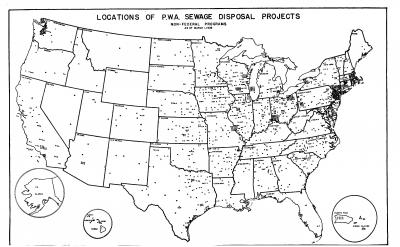
Above: A map of 1,000 wastewater infrastructure projects built by the PWA, which also constructed 1,000 freshwater projects.
Below: 60,000 classrooms were built by the PWA, in which 2.5 million students could be educated.
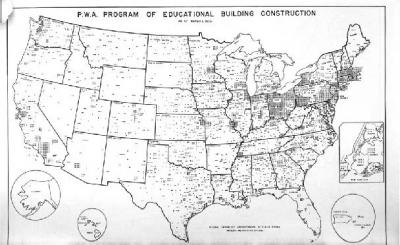
Now, confronted with the threat of Nazism, the U.S. launched the economic mobilization for World War II. Had it not been for the physical transformation of the economy prior to the war mobilization, the mobilization would not have been possible. And although war production itself adds nothing to the productive economy directly, the mobilization created technological and scientific innovations that were generalized and spread throughout the economy as a whole.
Industries would have to retool, reconvert, and reach accelerated levels of production. The key bottleneck was the machine tool design sector—the machines that build other machines—by taking new scientific ideas and imprinting them physically into those machines. Roosevelt had the Reconstruction Finance Corporation funnel $2 billion (a significant sum in those days) into the machine tool sector. The dramatic result was that whereas in 1938 the United States had produced only 34,000 machine tools, by 1942 the United States was producing 307,000, nearly ten times the 1938 level and fifty times the 1933 level.
Further, Roosevelt had the RFC allocate $4.5 billion to aviation, including the airframe industry, and even more importantly, those sections of the auto industry that converted to aircraft production. Though people ridiculed Roosevelt’s 1941 call for producing 50,000 planes over three years, the U.S. soon exceeded that level, and by 1944, the U.S. produced 96,000 planes in one year. Under Roosevelt’s urging, the RFC extended $1.2 billion to build and upgrade 183 steel and pig iron plants, adding 11 million tons of new capacity.
There were non-linear effects. Aluminum and magnesium, which were known to chemists in the early 1800s, and which were produced in limited quantities in the twentieth century, were now brought into commercial production on a greatly enlarged scale. The mass production of synthetic rubber, resins, plastics, and fibers, were all fundamentally developed during the mobilization. The atom was split and its energy process rudimentarily mastered under Roosevelt’s Manhattan Project.
By 1944, the U.S. physical economy, which was devastated in 1933, now produced an astounding 46% of all the world’s manufactured goods. U.S. unemployment, which had officially reached an understated 12.83 million in 1933 (24.9% of the workforce), was now officially 0.67 million in 1944. The U.S. was the greatest agro-industrial economy on earth!
The U.S. population, which had been pessimistic in 1933, was now optimistic, and inspired by Roosevelt’s mission at the 1944 Bretton Woods conference: to bring American System methods, capital goods, and agricultural implements, to every nation, no matter how small or undeveloped, on earth.
10. Postscript: JFK
This optimism continued into the John F. Kennedy administration. Great projects such as NAWAPA (discussed elsewhere in this pamphlet) were on the agenda. Kennedy challenged the country to land a man on the moon “in this decade.” But while Kennedy resisted being pulled into useless wars abroad, the British had nevertheless thrust us into an unnecessary Cold War. With Kennedy’s asassination, the nation was derailed from its mission. The Cold War became a hot war in Vietnam. We went into a deep depression. Can we find it in ourselves to rediscover and fulfill the nation’s original intention? In the late 1960s Lyndon LaRouche picked up the torch to get us back on track. Now we must complete his mission.





